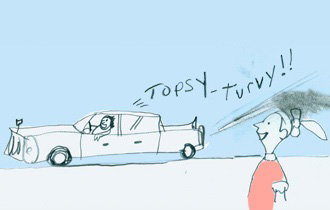Talk Show 6: Susan Cheever, Rachel Kadish, Daphne Kalotay, Mameve Medwed, Hannah Tinti, Vendela Vida
17.12.07
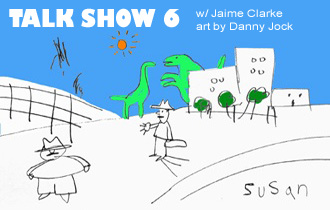 TS 6: First Day of School
TS 6: First Day of School
Hosted by Jaime Clarke
Guests
Susan Cheever is the author of twelve books including five novels, two biographies and four memoirs; she is working on a book about addiction and on a biography of Louisa May Alcott, and she teaches at the Bennington Writing Seminars and at the New School.
Rachel Kadish is the author of the novels From a Sealed Room and Tolstoy Lied: a Love Story, as well as numerous short stories and essays. She has been a fellow of the National Endowment for the Arts and a writer-in-residence at Stanford University. She currently teaches writing in Lesley University’s MFA program. Visit her at www.rachelkadish.com.
Daphne Kalotay is the author of Calamity and Other Stories, which was short listed for the 2005 Story Prize and includes work from Missouri Review, Prairie Schooner, AGNI, Michigan Quarterly Review, The Literary Review and Good Housekeeping. She lives in Brookline, MA. Visit her at www.daphnekalotay.com.
Mameve Medwed (named for two grandmothers, Mamie and Eva) is the author of the novels, Mail, Host Family, The End of an Error, How Elizabeth Barrett Browning Saved My Life, (2007 Massachusetts Honor award for Fiction) and the forthcoming Of Men and Their Mothers. Her stories, essays, and reviews have appeared in Yankee, Boston Globe, Missouri Review, Newsday and The Washington Post. Born in Bangor, Maine, she lives in Cambridge. Visit her at www.mamevemedwed.com.
Hannah Tinti is the editor of One Story magazine. Her short story collection, Animal Crackers, has sold in fifteen countries, and was a runner-up for the Pen/Hemingway award. She recently completed a novel about graverobbers that will be published in July 2008. Visit her at www.hannahtinti.com.
Vendela Vida is the author of two novels, Let the Northern Lights Erase Your Name and And Now You Can Go. Her first book, Girls on the Verge, was a journalistic study of female initiation rituals in America. She is the a co-editor of The Believer magazine, the editor of The Believer Book of Writers Talking to Writers, and a founding board member and teacher at 826 Valencia, a nonprofit youth writing lab.
––When and where was your first day of school?
Cheever: My first day of school was sometime in the 1940s when there were still dinosaurs in Central Park and all the men wore hats and some of them were still in uniform from W.W. II, which had ended recently. It was a nursery school called Walt Whitman that my bohemian parents (in those days that meant left wing, not hailing from a province of Czechoslovakia) thought was cool—although they wouldn’t have used that word either. Did we even speak English back then?
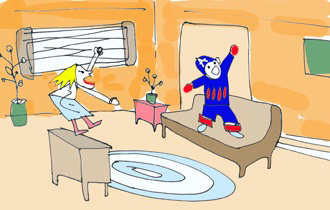 Kadish: September 1974, kindergarten in a tiny Jewish day school in a suburb of New York. Solomon Schechter Schools are now a big movement offering top-notch everything…but back then the school was a tiny startup. Most grades had 8-15 students. If you were chided by a teacher or had the hiccups during morning prayers the entire school knew it in milliseconds.
Kadish: September 1974, kindergarten in a tiny Jewish day school in a suburb of New York. Solomon Schechter Schools are now a big movement offering top-notch everything…but back then the school was a tiny startup. Most grades had 8-15 students. If you were chided by a teacher or had the hiccups during morning prayers the entire school knew it in milliseconds.
Kalotay: If we’re counting preschool, then Madison, NJ, at the Methodist church, where my mother dropped me off and left and though I’m sure she must have prepared me for weeks ahead of time, telling me what was going to happen, I remember thinking, “You’re just leaving me here?” It was a very frustrating place because for arts and crafts they would give us used, flattened cardboard containers to paint on (toothpaste boxes, for instance), and the paint would never stick to the coating. I also have a very powerful memory of going to the water fountain when I was three, and the girl ahead of me in line was from the other class, which meant she was four, and bent down and tied her shoe-lace all on her own; I was incredibly impressed.
Medwed: In Bangor, Maine at the Abraham Lincoln School sometime in the last millennium. In the middle of the playground, a couple of squares of unimpressive asphalt, stood a house where a whole family lived. It was as if a Fisher-Price toy had dropped out of a truck and just landed there. It looked like a child’s drawing of a house with window boxes of weeds and a couple of dispirited dandelion patches in the front “yard.” The only kid who lived there, Toothie Ruthie, used to come out and play tag with us. She was huge, with coke bottle glasses and a constant river of drool on her chin. Because she was considered “off, “she didn’t have to go to school but could participate in recess throughout the whole school day. We envied her. By force of size and strength, though not speed, she always managed to be “it.”
Tinti: My first day of school was at Harborlight Montessori in Beverly, Massachusetts. I’m not sure of the year. I think I started when I was three, so that would make it fall 1976. I stayed there until I was five and graduated kindergarten.
Vida: My first day of school was at Katherine Delmar Burke’s, an all-girls’ school in San Francisco. I had never gone to preschool or anything like that so I was incredibly excited, and, also, totally terrified of being late. I woke up at 4 a.m. that morning to get dressed and then waited until the sun came up to wake my parents.
Cheever: Probably some kind of pinafore, which is what they called a skirt with an attached top. That’s what three-year-olds wore in the days before Baby Phat and Osh Kosh B’Gosh.
Kadish: This was the seventies, so you can imagine. Probably something velour. It wasn’t my fault. I wasn’t yet picking my own clothing.
Kalotay: Bellbottoms. But starting in kindergarten I always wore a skirt to the first day of school. It was the only time all year I wore a skirt, which usually came from Sears.
Medwed: Pigtails with big bows, beautifully ironed dresses (my mother prided herself on her ironing skills) white anklets and laced oxfords that were good for your foot development. (though I had patent leather Mary Janes for party days). I also had hand-knit sweaters with silver buttons and hearts and snowflakes all over them. During the winter, I wore three pairs of socks and stiff rubber boots (it was COLD, then) which rubbed raw red stripes on my legs. I was much too well dressed for Maine and longed for faded corduroy overalls and wrinkled misbuttoned plaid shirts like everyone else.
Tinti: I have no idea, but seeing as it was 1976, there was probably corduroy involved. I’m guessing corduroy pants, and a thick Irish sweater with wooden buttons. My family went to Ireland when I was around that age, and I had one of those sweaters, and I wore it all the time.
Vida: We had a uniform. A green plaid dress that we wore over a short-sleeve white blouse, and under a green cardigan with big white buttons. Green knee-high socks (that we had to keep pulled up) and brown leather lace-up shoes that everyone bought at the Junior Boot Shop. (I’ve heard rumors that the guy who sold us our shoes in kindergarten still works there.) I didn’t know this the first day, but I quickly learned all the girls wore shorts underneath their uniforms so they could step out of their dresses for gym class and run around in what has got to be the world’s worst workout outfit: shiny shorts and a white blouse, wool knee-highs, and leather shoes.
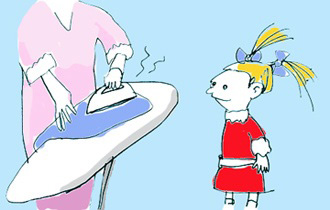 –Who was your closest friend in kindergarten and were you still friends at the end of the school year?
–Who was your closest friend in kindergarten and were you still friends at the end of the school year?
Cheever: I had one great friend, Sally Belasco was her name. By kindergarten I had two other friends, Mitten Mittendorf and Connie Morrow, who is now a student of mine at Bennington! Sally and I were so close that I inherited a hamster from her which I named Algernon Belasco. The tragedy of my young life was moving to the suburbs, I had to leave my friends behind—but Algernon came with us.
Kadish: I think his name was David, but I’m not sure about that. I am sure that he liked to play Captain America and let me pretend to be some other superhero, and at his house we jumped off a lot of furniture that I would not let my kids jump off today. And he had a miniature orange tree and it had one orange on it. That’s all I remember, except that this was his last year in the school, and also that each of us was teased for having a best friend of the opposite sex, and I think that by the end of the year the teasing had put an end to our playdates.
Kalotay: Elizabeth, who lived not far from the school, and we’re still friends. But my walking-to-school partner from my neighborhood, Allison, did in fact try (unsuccessfully) to come between the two of us; I can’t quite remember how, but it involved a threat about eating or swallowing leaves…. Allison was great to walk home with because I would stop off at her house and we would eat marshmallows with peanut butter on top. But pretty soon after that she went to private school and I didn’t see her any more.
Medwed: My husband, whom I met in nursery school (he was a couple of years ahead, but we have a photo of the two of us sitting across from each other at a birthday party. He was wearing short pants and a wide tie; I, a pinafore and ribbons in my hair) swears he completely remembers every single detail of me in kindergarten, my finger-painting skills, my peg-hammering abilities, my eraser-clapping technique even though he would have been in second grade at that time and much more advanced. Despite our age gap, he insists we were soul mates back then. I don’t remember him for one minute. I doubt we ever spoke. Still, I must admit this romantic construct does make a good story even if it isn’t true. My best friend was Natalie Burnett and we stayed friends through most of grammar school. Her mother was a nurse, her father was a policeman and she had a mass of curly red hair which she hated and I envied. My hair was thick and unruly. My mother used to thin it by lifting the top layer and hacking the underbrush to the scalp. That was fine for two days until my hair started to grow in, turning the outer surface into craters of the moon.
Tinti: I have a vague memory of a boy named Sebastian, but I don’t know what happened to him. I am still friends with another kid named Mike Scagliotti, who was in my carpool, and who always got bloody noses.
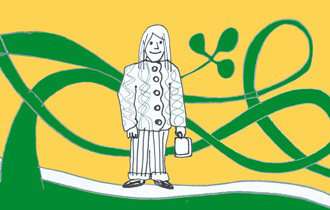 Vida: My closest friend was a striking-looking girl with dark brown hair and light blue eyes named Aimee. I don’t think either of us were trouble-makers on our own, but something would happen when we got together and we’d get into a lot of …mischief. We went to that girls’ school for nine years, and never once were we placed in the same classroom. I think word got out that it was best to let us mingle in our own free time. We tap-danced together when we were young, and when we were ten or eleven we started a local chapter of the Robert Downey, Jr. fan club—we would write letters to Downey and watch Tuff Turf over and over. When we were in the eighth grade we had slightly more unconventional ways of showing our affection for boys, including an incident in which we threw a glass bottle through the window of a crush’s house. We succeeded in getting the attention of his parents and the police. Aimee and I still see each other around San Francisco sometimes. All she has to do is laugh and I laugh too.
Vida: My closest friend was a striking-looking girl with dark brown hair and light blue eyes named Aimee. I don’t think either of us were trouble-makers on our own, but something would happen when we got together and we’d get into a lot of …mischief. We went to that girls’ school for nine years, and never once were we placed in the same classroom. I think word got out that it was best to let us mingle in our own free time. We tap-danced together when we were young, and when we were ten or eleven we started a local chapter of the Robert Downey, Jr. fan club—we would write letters to Downey and watch Tuff Turf over and over. When we were in the eighth grade we had slightly more unconventional ways of showing our affection for boys, including an incident in which we threw a glass bottle through the window of a crush’s house. We succeeded in getting the attention of his parents and the police. Aimee and I still see each other around San Francisco sometimes. All she has to do is laugh and I laugh too.
––What was your teacher’s name, and what do you remember most about her?
Cheever: I don’t remember a teacher until second grade. Maybe we all ran wild!
Kadish: I am so very glad you asked this question. My kindergarten teacher’s name was, and I am not making this up, Mrs. Eisenbach…pronounced Eyes-in-back. She told us she had eyes in back of her head and could see what we were up to. Call me credulous, but I will swear this was true. Nobody pulled one over on Mrs. Eisenbach.
Kalotay: Mrs. Rendall! I loved her. She was old—about to retire, in fact—and drove a big Cadillac to school. According to my mother I would come home saying things like, “Everything’s just topsy-turvy.” Outdated expressions like that.
Medwed: Miss O’Conner. She was strict. She had taught both my parents. And considering my father was twelve years older than my mother, Miss O’Conner had staying power up the kazoo. She liked orderly lines and would smack you if you stepped out of yours even a foot. She wielded a mean ruler, ready to snap it against your fingers if you smeared your crayons or splattered your ink. Unlike me, my parents had been exemplary. She never stopped comparing us. They were always smarter, more industrious, better behaved and towed that line far better than their offspring.
Tinti: We had two teachers, Linda and Debbie. Linda had dark hair, and Debbie had short blondish brown hair.
Vida: My teachers were Mrs. Van and Mrs. G. I don’t remember much else about them except one of them had curly hair while the other one had straight hair. We also had a hippie music teacher come in and sing to us with a guitar. Her favorite song was “Little Boxes,” the song about how all the houses are the same, and all the people who live in them are the same. She’d make us practice the song, and then tell us that in our uniforms we were just like those houses, and that none of us had any individuality. We were only five but we knew she was a bad, bad person.
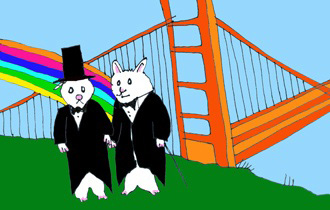 ––What are your outstanding memories from kindergarten?
––What are your outstanding memories from kindergarten?
Cheever: I went to a very special kindergarten at The Brearley School, a school which even then was hard to get into (believe it or not as a three-year-old my intellect was quite impressive). Brearley provides an identity for its students even now and I reveled in that identity. I was a Brearley Girl down to my special rhythm shoes and when we moved to the suburbs I continued to wear my Brearley uniform until it fell apart. Now, many years later, I live across the street from the Brearley School.
Kadish: A girl named Randy asked me whether I kept kosher. All the kids were standing around the swingset. I had no idea what a kosher was, or whether we had one, or where in our house my parents might keep it. But all the other kids seemed to keep one, so I said I did too.
Kalotay: Having our photographs taken outside by the jungle gym. In my recollection, the principal was the one taking the photos, but this seems odd now (although I know that when, a few years later, one of the lenses came out of my glasses, I immediately went to the principal’s office because I was sure that he would be able to fix them—which he did.) I also remember that we made some kind of food for each letter of the alphabet. A was applesauce, B was butter. I don’t recall C, but D was fried donuts. I was especially lucky because when it was my turn to eat a donut, the one I got was sort of runty and small, so the teaching assistant gave me an entire other one, too!
Medwed: They mostly involve Miss O’Conner. My father used to drop me off at school early on his way to the office. As a result, there was plenty of time for Miss O’Conner to take me to mass at St. John’s Catholic Church. I learned a lot—how to click the rosary beads, all the words to Ave Maria, when to kneel. I was quite fond of the hush in that particular cathedral. I brought my Raggedy Ann doll along with me. She liked it, too. That I was Jewish was irrelevant. My Catholic kindergarten ended, however, when I walked by St. John’s with my father and I crossed myself.
Tinti: I remember making a solar system out of construction paper, using different sized coins to trace the planets. A silver dollar for Jupiter, a quarter for Saturn, a dime for Pluto, a nickel for Earth. But my outstanding memory happened in my last year, when I was five. Harborlight was in the basement of a church, and we played in the graveyard for recess. It was an old New England graveyard, with black slate markers, which are very sharp when they splinter and break. One day I was running through the graves and I fell on one and it went through my left wrist, severing the artery. I was rushed to Salem Children’s hospital in a police car. But when I got there they couldn’t operate on me, because they didn’t have parental consent, and my mom and dad were at a Red Sox game. Again, this was the seventies—no cell phones. So there was a lot of mayhem with the doctors. I remember a drawing of Snow White and the Seven Dwarves on the wall. They finally got the OK from a friend of the family and stitched me up. I still have a pretty bad scar there. And my mom never went to another Red Sox game.
Vida: One day, two hamsters were brought into our classroom in a cage. We had a wedding for them—white dress on one, black top hat on the other—and waited for them to have babies. After a few months, when no offspring appeared, we learned they were both male. Many parents made jokes about this being San Francisco, after all, but none of us understood what they were talking about.
